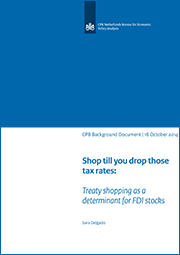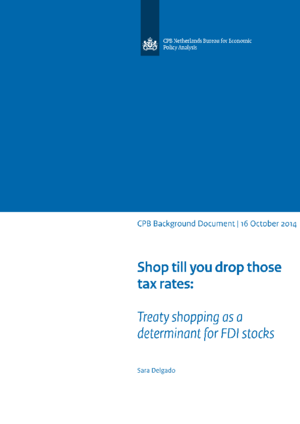Shop till you drop those tax rates: Treaty shopping as a determinant for FDI stocks
Tax treaty shopping beneficial

This result is found by researchers Maarten van ’t Riet and Arjan Lejour of CPB Netherlands Bureau for Economic Policy Research, using a novel method applied to a network of tax treaties for 108 countries. The United Kingdom heads the list of central countries in the international tax network, while the Netherlands is ranked fourth.
The network analysis takes account of the double tax relief methods that countries apply, as well as bilateral tax treaties. Their desired effect indeed materializes: a substantial reduction of possible double taxation on international dividends. If multinationals use the potential treaty benefits by structuring their tax liabilities through conduit countries, they reduce their tax burden even further. The worldwide average remaining double tax rate is 6 percent. This comes on top of the corporate income tax due in the host country of the investments.
For some countries all tax revenues on international dividends disappear as a consequence of treaty shopping, while the additional tax revenues for conduit countries are less than half percent of worldwide dividend flows.
A policy simulation with the network method demonstrates that treaty shopping has a strong dampening effect on the double tax rates for multinationals. This suggests that possible actions against tax avoidance on dividend flows requires large scale international cooperation.
Read the publication CPB Discussion Paper 290 and the accompanying CPB Background Document.
Contacts


Read also CPB Discussion Paper 290.
The issue is investigated by performing cross-sectional regressions, whereby standard models for inward and outward FDI are augmented with a betweenness centrality indicator, which reflects how attractive a country is as conduit for dividend flows. The document is structured as follows. Chapter 2 discusses and motivates the research methodology, while chapter 3 describes the data used in the analysis. In chapter 4, the baseline regression results are presented followed by a number of robustness checks. Finally, in chapter 5 we come to conclusions.
